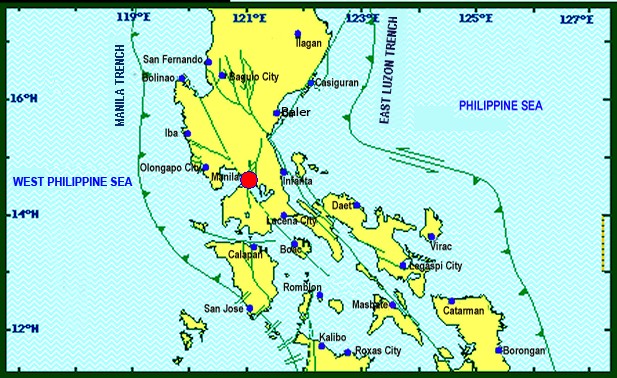Filtered By: Scitech
SciTech
Mandaluyong quake may be sign of stronger tremors to come
By BEA MONTENEGRO, GMA News
State seismologists are keeping a close watch on Metro Manila's Valley Fault System following last Monday's earthquake, underscoring long-held concerns that the capital is long overdue for a major tremor.
On September 29, Monday, an earthquake of magnitude 2.7 hit Mandaluyong city at 7:25 p.m. Phivolcs has indicated the Valley Fault System as its possible source:
EQInfo#3: 29Sept2014 07:25PM M=2.7; Depth= 020km; 14.59°N, 121.07°E - 04 km S 89° E of Mandaluyong City; 03 km N... http://t.co/67cCS9SswE
— PHIVOLCS-DOST (@phivolcs_dost) September 30, 2014

The Valley Fault system is made up of two separate faults: the West Valley Fault—which is being eyed as the likely origin of Monday's quake—and the East Valley Fault. The former is found on the west side of the Marikina Valley and the latter is on the east side, in Montalban and San Mateo.
The Valley Fault system is thought to pose the greatest threat to Metro Manila because of its proximity to the metropolis.
Heightened monitoring
Phivolcs' Supervising Science Research Specialist, Arnold Melosantos, said in a phone interview that the agency is currently increasing its monitoring equipment around the area of the West Valley Fault.
However, Melosantos stopped short of confirming the occurrence of a strong earthquake any time in the immediate future. "At this moment we cannot say anything conclusive," he said.
Nevertheless, Phivolcs has constantly been reminding the public to prepare for the eventuality of an intense earthquake in the Metro Manila area.
Last year, Phivolcs director Renato Solidum Jr. reiterated and underscored previous warnings that a magnitude 7.2 earthquake is highly possible from the West Valley Fault at any time. He said the last time an earthquake occurred along the West Valley fault was in 1658.
Long overdue quake
According to the Metro Manila Earthquake Impact Reduction Study (MMEIRS) conducted by Phivolcs, the entire Valley Fault System could potentially cause the largest impact on Metropolitan Manila area in the event of a large earthquake.
That no large quake has been recorded along the West Valley Fault since the 17th century strongly suggests that pressure may have been silently building up since then—and that the next big quake is long overdue.
That no large quake has been recorded along the West Valley Fault since the 17th century strongly suggests that pressure may have been silently building up since then—and that the next big quake is long overdue.
The MMEIRS estimated that a potential rupture of the West Valley Fault would heavily or partly damage as much as 40% of Metro Manila's residential buildings, and cause as many as 34,000 deaths and 1,144,000 injuries.
“It can happen within our generation or the next generation,” Solidum said.
In a separate interview, Solidum also said that all regions of the Philippines except for Palawan and parts of Sulu and Tawi-tawi are at great risk of earthquakes. — TJD, GMA News
More Videos
Most Popular



